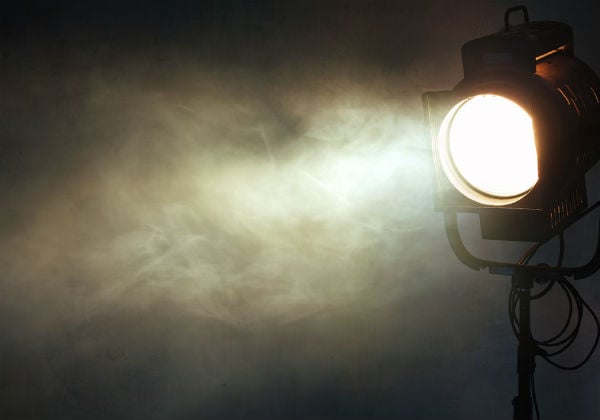This discussion is now closed.
Check out other Related discussions
- Colorimetry - BTEC applied science chemistry
- 5.2,determining glidcose concentration PAG
- Red Cheeks
- Is colorimetry and calorimetry the same thing?
- how can i put my chemstry aqa a level grade up from a c to an a?
- a level biology about tRNA
- Help urgent maths
- BTEC applied science unit 19
- Do we need to know about biosensors? A level OCR biology
- AQA A level Biology - Genetic Fingerprinting
- A Level Advice
- 25 marker essay biology
- trig identities topic assessment (integral maths) Q2
- Need help with another AL Maths Question
- Similar shapes question
- aqa a level biology help
- Alevel Maths Mechanics Questoon
- series and sequences question
- A level help!!
- Osteopathy courses
I just set out to answer this and then realised i didnt really know the answer lol...
So you have a sample in a cuvette, white light is striking the sample and some of it being absorbed. The remaining frequencies are transmitted and are what gives the solution its colour. If a solution is blue, then it is absorbing orange light. By using an orange filter you're only letting orange light hit the sample... so perhaps the sensor sensitivity is somehow improved by only allowing frequencies which will show a level of absorption through. i.e. if all the frequencies(except orange) were hitting it it'd be harder to measure variations.
This is speculation
So you have a sample in a cuvette, white light is striking the sample and some of it being absorbed. The remaining frequencies are transmitted and are what gives the solution its colour. If a solution is blue, then it is absorbing orange light. By using an orange filter you're only letting orange light hit the sample... so perhaps the sensor sensitivity is somehow improved by only allowing frequencies which will show a level of absorption through. i.e. if all the frequencies(except orange) were hitting it it'd be harder to measure variations.
This is speculation

Using the filter which is a complementary colour to the solution being tested means the only colour of light being absorbed or transmitted by the solution is the one which is most strongly absorbed, making it easier to measure the concentration of the solution.
Original post by sharpyt_14
Using the filter which is a complementary colour to the solution being tested means the only colour of light being absorbed or transmitted by the solution is the one which is most strongly absorbed, making it easier to measure the concentration of the solution.
Welcome to TSR.
Before replying to threads, it is worth checking how old they are.
This one was probably last visited when you were still in primary school. Your reply is pretty unlikely to be seen by anyone who was part of it.
Original post by Awan0903
What colour of the calorimeter filter should be used when using a red coloured sample?
Please reply soon.
Please reply soon.

Original post by charco

what is this??
Original post by Awan0903
what is this??
The complementary colour wheel.
Just go to the opposite side of the wheel to find the complementary colour.
What would happen if you used the same colour filter as your solution?
Original post by Pigster
Welcome to TSR.
Before replying to threads, it is worth checking how old they are.
This one was probably last visited when you were still in primary school. Your reply is pretty unlikely to be seen by anyone who was part of it.
Before replying to threads, it is worth checking how old they are.
This one was probably last visited when you were still in primary school. Your reply is pretty unlikely to be seen by anyone who was part of it.
I saw it and found it helpful
(edited 7 months ago)
Original post by sharpyt_14
Using the filter which is a complementary colour to the solution being tested means the only colour of light being absorbed or transmitted by the solution is the one which is most strongly absorbed, making it easier to measure the concentration of the solution.
thanks that helped me understand, well explained
Hi @eddiemason,
I'm pleased to hear that you found this thread useful.
However, please be aware that it's 13 years old. We generally avoid reviving old threads, as there's a risk that queries may go unnoticed when threads are several years old and already have responses.
I will now close this thread, but don't hesitate to start a new thread if you have any additional questions.
Have a great weekend,
5hyl33n
I'm pleased to hear that you found this thread useful.
However, please be aware that it's 13 years old. We generally avoid reviving old threads, as there's a risk that queries may go unnoticed when threads are several years old and already have responses.
I will now close this thread, but don't hesitate to start a new thread if you have any additional questions.
Have a great weekend,
5hyl33n
Related discussions
- Colorimetry - BTEC applied science chemistry
- 5.2,determining glidcose concentration PAG
- Red Cheeks
- Is colorimetry and calorimetry the same thing?
- how can i put my chemstry aqa a level grade up from a c to an a?
- a level biology about tRNA
- Help urgent maths
- BTEC applied science unit 19
- Do we need to know about biosensors? A level OCR biology
- AQA A level Biology - Genetic Fingerprinting
- A Level Advice
- 25 marker essay biology
- trig identities topic assessment (integral maths) Q2
- Need help with another AL Maths Question
- Similar shapes question
- aqa a level biology help
- Alevel Maths Mechanics Questoon
- series and sequences question
- A level help!!
- Osteopathy courses
Latest
Last reply 2 minutes ago
Official Veterinary Medicine Applicants thread 2024 entryLast reply 3 minutes ago
Can I switch to a placement year on the same course?Last reply 6 minutes ago
Google level 4 software development apprenticeshipLast reply 6 minutes ago
Unit 19 health and social care, HELP PLEASE!!Last reply 10 minutes ago
MSc Petroleum Engineering - Aberdeen or Heriot-Watt?Last reply 15 minutes ago
Access to HE accepted for Degree Apprenticeships?Last reply 16 minutes ago
Official: University of Bristol A100 2024 Entry ApplicantsLast reply 19 minutes ago
yet to receive a woodhouse interviewPosted 21 minutes ago
Summer Accomodation for Warwick or Coventry students/visitorsLast reply 23 minutes ago
Official University Offer Holder thread list (2024 entry)Trending
Last reply 5 days ago
Im confused about this chemistry question, why does it form these productsTrending
Last reply 5 days ago
Im confused about this chemistry question, why does it form these products




